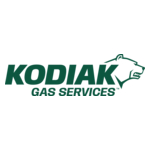Sign up for daily news updates from CleanTechnica on email. Or follow us on Google News!
Bummed about what last week’s elections mean for the climate? The good news is that lots of movement will continue to happen at the state and local levels.
One big trend is that air quality agencies across the US are quietly becoming major, if unintentional, players in the race to phase out fossil fuels. Using well-defined and long-standing powers to regulate nitrogen oxide (NOx) pollution, regulators from California to the Northeast to Maryland are starting to set and study zero-emissions standards that are poised, as a byproduct of sorts, to phase out new sales of fossil-fueled heating equipment in their territories. While the policy goal of these new rules is to significantly reduce regional air pollution like smog and fine particulate matter (PM2.5), they could help transition communities away from fossil fuels and towards heat pumps and clean, healthy buildings in ways that electrification mandates have not.
The air pollution that results from burning fossil fuels in buildings causes smog and acid rain and costs the $45 billion and causes roughly 6,000 premature deaths annually. Air quality agencies, with regulatory power provided by the Clean Air Act, have reduced pollutant emissions for decades and achieved notable successes, especially in reducing air pollution from power plants. Now, many agencies are focused on reducing the pollution from fossil fuel combustion in homes and businesses.
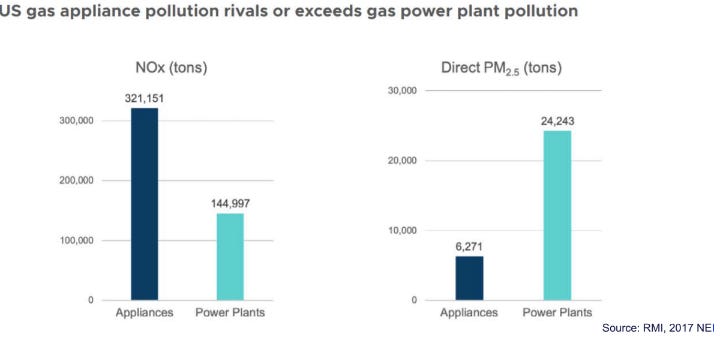 Appliances emit more NOx pollution than gas power plants. Image courtesy of RMI
Appliances emit more NOx pollution than gas power plants. Image courtesy of RMI
Low-NOx Standards Started In Unexpected Places
Ironically, some of the earliest movers in reducing NOx from heating equipment were places like Utah and Texas, which, starting in 2000, mandated that appliances like water heaters reduce their NOx pollution. Texas first adopted rules requiring new water heaters, small boilers, and process heaters statewide to meet specific NOx emission limits in 2000, as part of the state’s plan for meeting federal air quality standards for ozone. The Utah Air Quality board passed a law in 2015 requiring residential water heaters to emit “ultra-low” levels of NOx. This rule alone was predicted to reduce overall outdoor NOx emissions by 35% by 2024 and passed with little opposition. Low-NOx standards are less controversial because they can be achieved pretty easily with existing technologies and minimal effort. In Utah, for example, it was estimated that reducing NOx emissions from water heaters would only cost an extra $10 per water heater.

California Leads The Way To Zero-NOx
Other states with more significant decarbonization goals have gone even further by pursuing zero-NOx standards for space and water heating. Zero-NOx standards mean newly sold or installed heaters and water heaters can’t emit any nitrogen oxides, something only possible currently with equipment that doesn’t burn fossil fuels (aka units that run on electricity). Not only does this reduce local air pollution much further than low NOx standards, it has the side benefit of reducing greenhouse gas emissions substantially as the electricity grid becomes rapidly cleaner and the market shifts towards efficient heat pumps.
California, unsurprisingly given its long history as an environmental leader, has led the nation in the movement to zero-NOx appliances. The Bay Area Air Quality Management District was the first to go zero-NOx, adopting rules in the spring of 2023 that ambitiously require new water heaters to be pollution-free by 2027, and new furnaces by 2029. This regulation means that the 7.5 million residents in the 9 counties that make up this air district won’t be able to purchase a new gas water heater starting in two short years. Even conservative estimates for how many new water heaters will become heat pumps due to this rule are over 100,000 annually (more details to come on these projections in AWHI’s state of the market report to be released at the end of the year). Compare that to the 190,000 heat pump water heaters that were sold nationally in 2023 and you get a sense of how large this lever is to drive market transformation. Because it is the first area to move to zero NOx emissions, the Bay Area air agency has created a broad stakeholder working group that consults on interim reports investigating the feasibility of implementation and developing solutions to identified obstacles. The move away from combustion equipment is estimated to save $890 million per year in health impacts due to reduced air pollution exposure and prevent an estimated 85 premature deaths, according to the Bay Area Air Quality Management District.
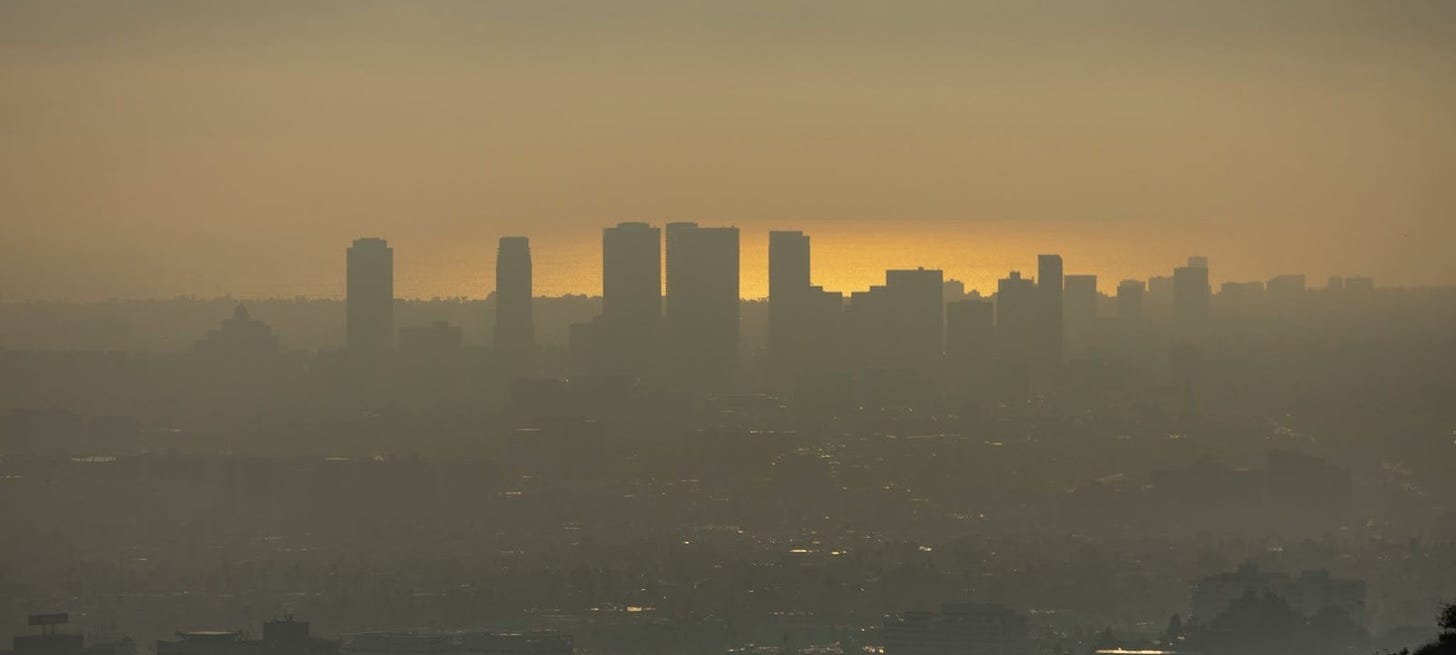
Following the Bay Area’s lead, the South Coast Air Quality Management District, which is home to almost half of the population of California (16.8 million people), just adopted zero-emission building equipment rules. South Coast’s first rules adopted this summer apply to commercial water heaters, instant water heaters, and pool heaters and will be phased in over time (see table below). Zero-NOx rules for residential tank water heaters are expected soon and are proposed to start in 2027, like those in the Bay Area. These rules are poised to drive even more water heaters to heat pumps, potentially over 200,000 annually.
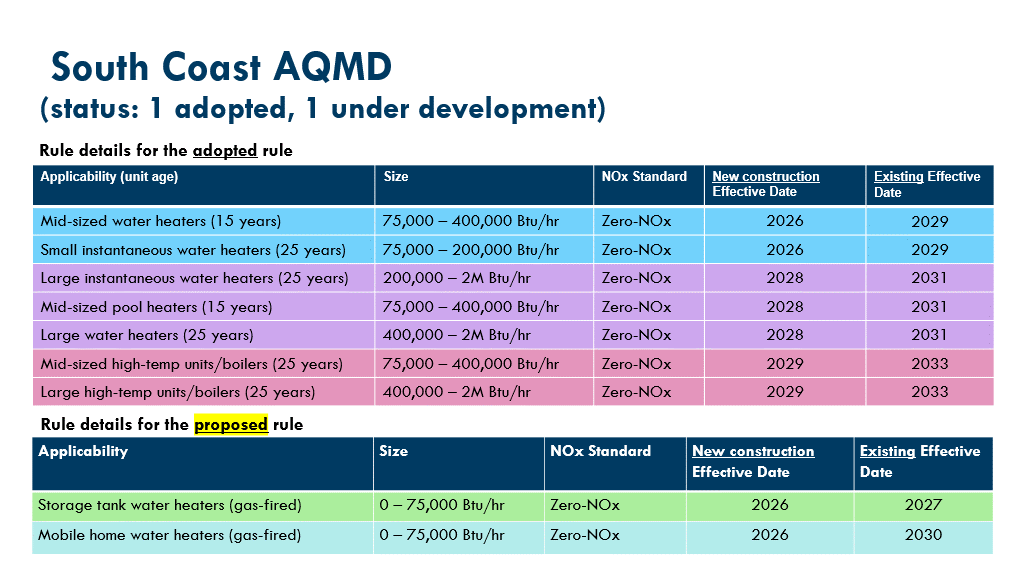
Finally, the California Air Resources Board (CARB), which sets regulations for the entire state of California, is looking into both zero-greenhouse gas and zero-NOx emissions rules. CARB staff plan to take a proposed regulation to the Board for consideration in 2025, with an implementation phase-in schedule similar to South Coast’s rules. This means that by the end of the decade, all of California’s 40 million residents could potentially be purchasing zero-pollution HVAC and water heaters, likely driving heat pump sales through the roof.
Other States Getting In On The Action
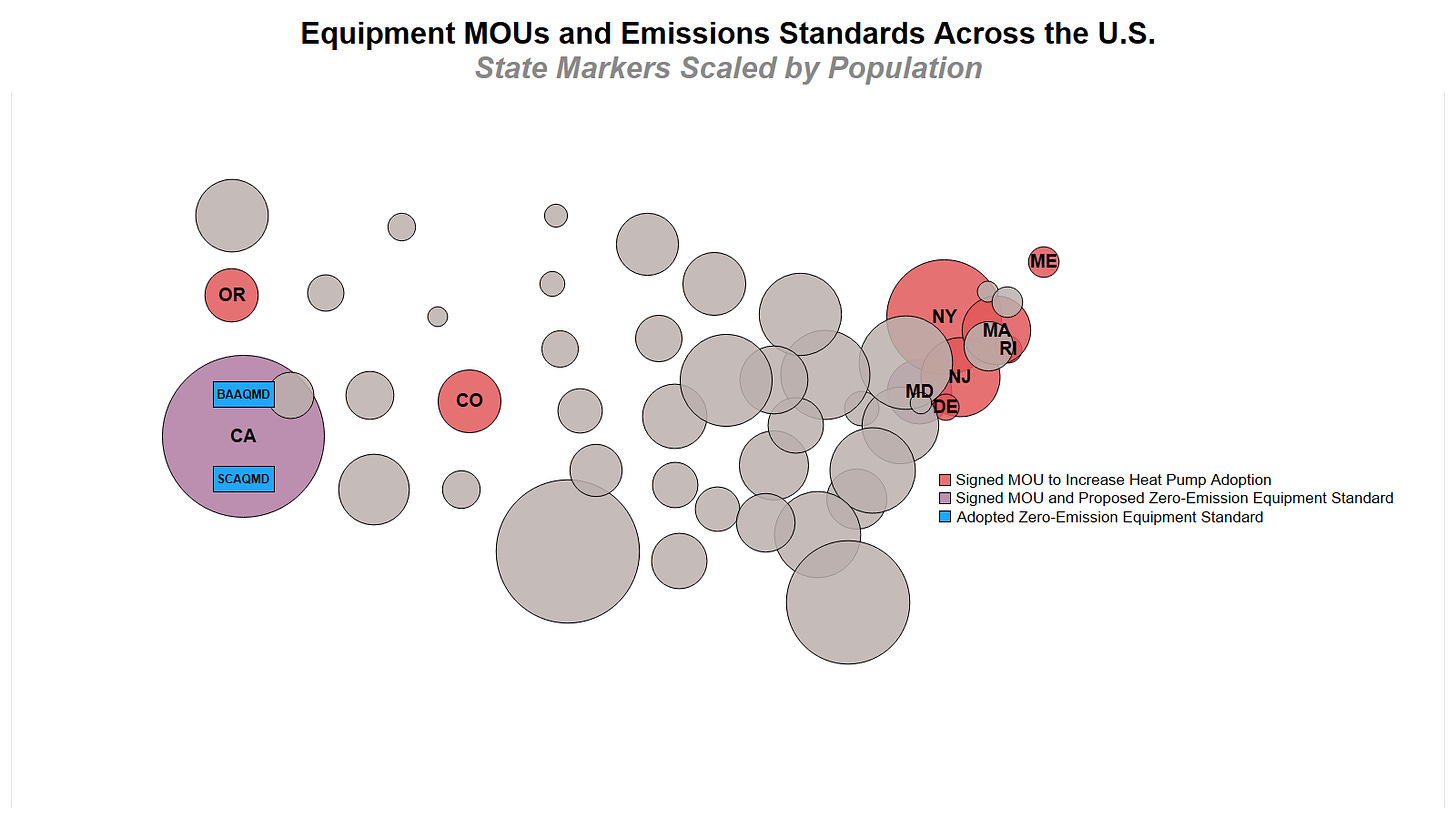
Other states are exploring using low- and zero-NOx air quality authority to transition away from fossil fuels as well. Last year, Colorado restricted NOx emissions from space and water heating equipment through a legislative bill rather than an air quality agency. Colorado’s low-NOx rule takes effect in 2026. By 2030, the bill mandates the Colorado Air Quality Control Commission to examine whether further NOx restrictions may be needed to achieve state climate goals.
This past June, Maryland governor Wes Moore issued an executive order directing the state’s Department of the Environment to develop zero-emission heating equipment standards this year.
Many other states are also exploring regulating NOx emissions from heating equipment. The Northeast States for Coordinated Air Use Management (NESCAUM) drafted a memorandum of understanding this past February in which nine states pledged to accelerate the adoption of heat pumps to make up 65% of residential heating, cooling and water heating sales by 2030: California, Colorado, Maine, Maryland, Massachusetts, New Jersey, New York, Oregon and Rhode Island. NESCAUM is also working on model air quality rules that their partner states can use to draft their own zero-emission standards in the coming years. These nine states represent almost a third of the US population and with their significant proportion of gas and oil for home heating, have an outsized impact on the fossil fuel heating appliance market.
Air quality agencies across the US are thus poised to not only continue cleaning up local and regional air pollution but also to drive significant advancements in decarbonization nationwide. Zero-NOx emissions standards on the horizon will phase out the purchase of new combustion appliances and significantly drive the adoption of clean, efficient heat pumps and heat pump water heaters.
For more info on this topic watch a recent AWHI Working Group Meeting on Air Quality Agencies
This article was originally published in PHCP Pros.
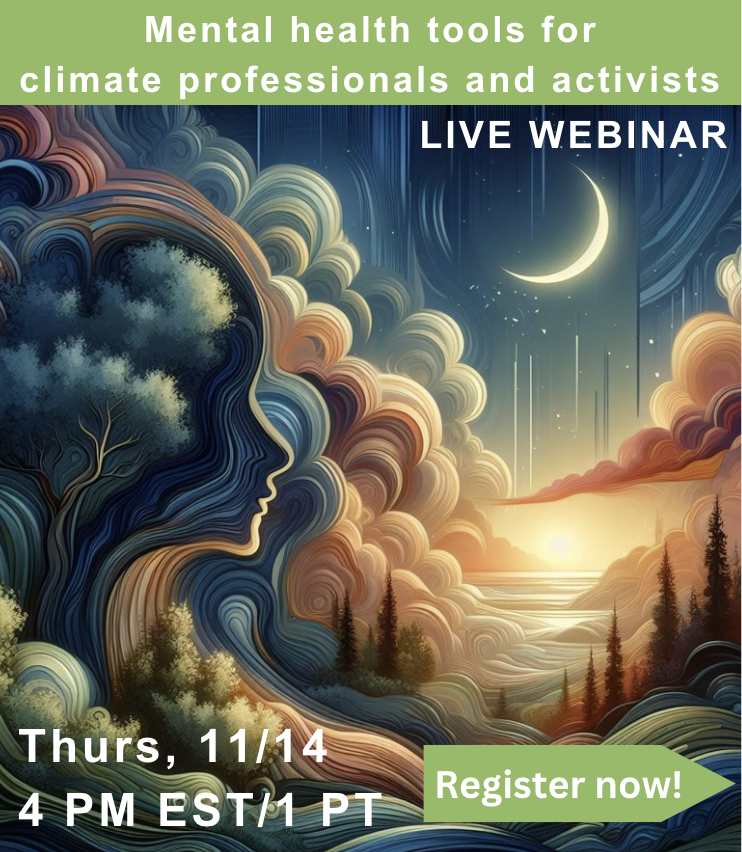
Chip in a few dollars a month to help support independent cleantech coverage that helps to accelerate the cleantech revolution!
Have a tip for CleanTechnica? Want to advertise? Want to suggest a guest for our CleanTech Talk podcast? Contact us here.
Sign up for our daily newsletter for 15 new cleantech stories a day. Or sign up for our weekly one if daily is too frequent.
CleanTechnica uses affiliate links. See our policy here.
CleanTechnica’s Comment Policy

